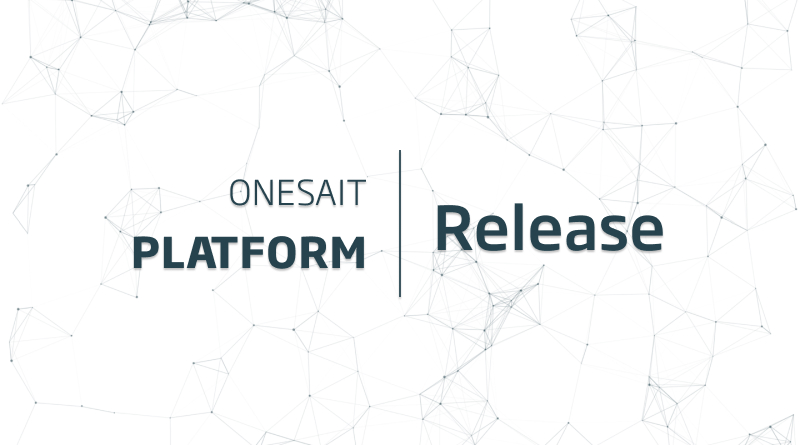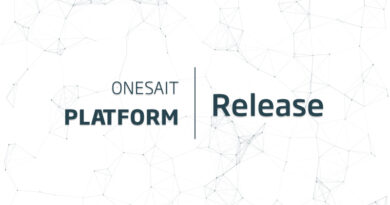Release 4.1.0-Outlaw for Onesait Platform
Summer is here, Q2 is over, and here we have a new iteration of the Onesait Platform, reaching its version 4.1.0, which we have called «Outlaw», following our versioning policy and after a hard-fought final vote.
This version includes new and long-awaited features, as well as the Experience and Center distributions:
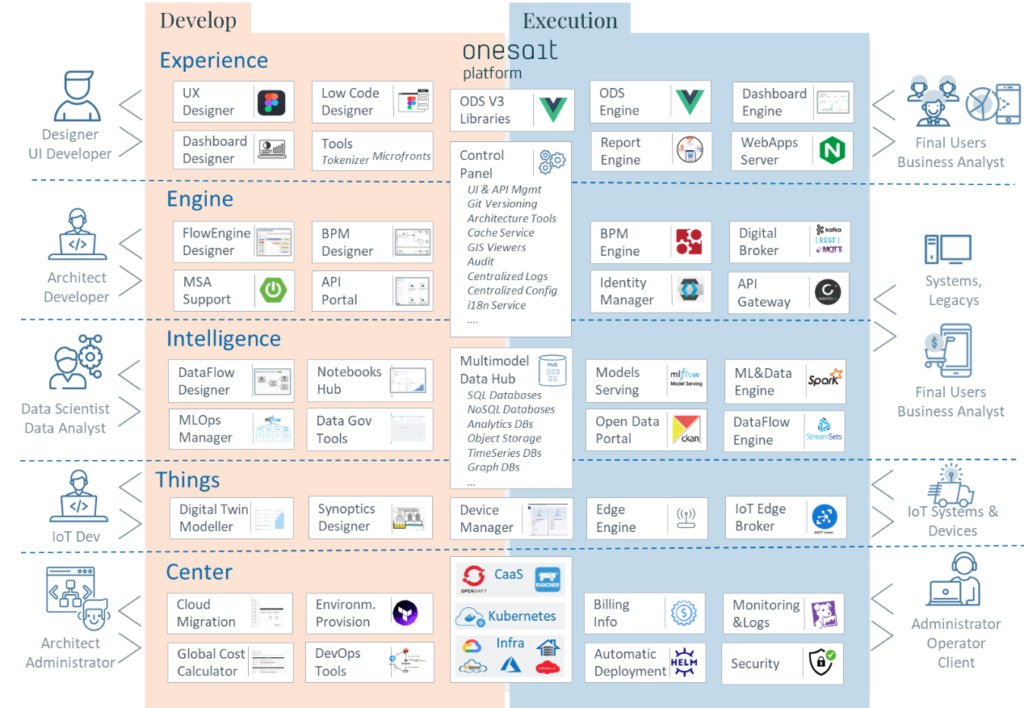
As usual, if you want to know what we are working on, be sure to take a look at our 2022 Roadmap, and don’t forget that you can find more information about the Platform’s capabilities in the new Developer Portal.
Having said that, let’s see what’s new in this version.
Engine
In this distribution, we apply agile and Lowcode strategies for the development and integration of business solutions, based on standards, independent of specific cloud vendors, and deployable on IaaS, SaaS or On-Premise infrastructures:
- Scalability and stability of any infrastructure.
- The data in the core.
- Integrated end-to-end security.
Throughout this second period of the year, we have worked on the following points:
License Manager
The first version of the new license management module has been published in this release.
This module allows for flexible license management, both for solutions implemented in the Cloud and On Premise, that may not have Internet access.
This first version allows management of both the modules that make up the product to be licensed, and the licenses, which are associated either with the product or with any of its modules, and allows to validate whether a license is correct using a REST Endpoint offered for it (in SaaS mode), or from a library to perform a local validation.
Besides, as seen in the following image, the License Manager has been integrated into the Control Center, so that a product can manage its licenses from the same place where it manages its environments, deployments, architecture, documentation, infrastructure costs, etc.

If you want to know more about it, we have a complete article in the Development Portal.
Support to null and enumerated values in Entities/Ontologies
This functionality allows defining enumerated values and default values for the attributes of an Entity.
In the following image we see the Default Value and Enumerated Values columns:
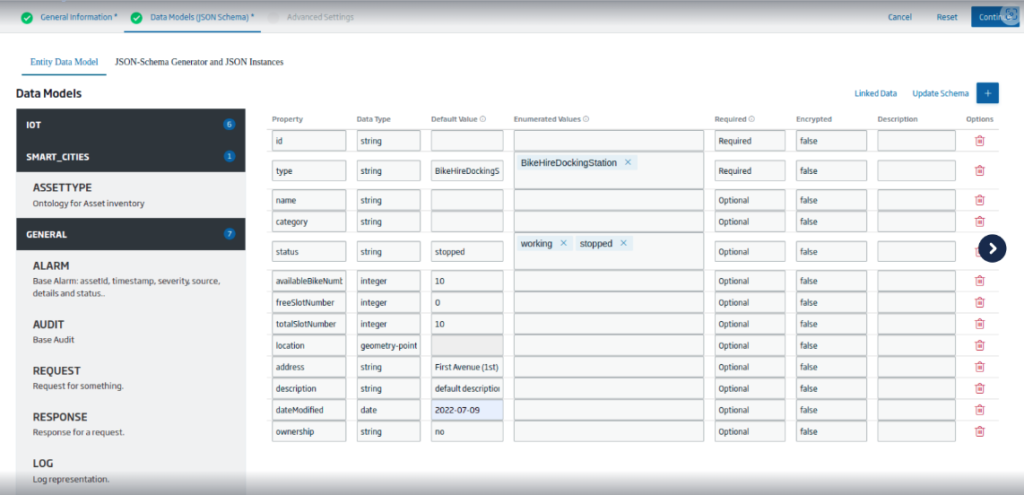
With the enumerated, values we can manage the values of an attribute, such as in the CRUD of Entities or in the CRUD Gadget:

Meanwhile, the Platform’s support of default values guarantees that, should the value of an attribute of an Entity not arrive, the Platform will fill the attribute with that default value. These features are detailed in these Dev Portal articles:
- Soporte Valores Enumerados en Entidades (Support to Enumerated Values in Entities).
- Soporte Defaults en Entidades (Support to Default Values in Entities).
Publication of architecture assets in the Open Source model
This quarter we have started with the publications of the Onesait Architecture assets in Open Source model, releasing them on GitHub, as well as on Nexus and DockerHub.
You can see which assets have been published in this release in this link.
Other improvements
In addition to the new features mentioned above, we have made a number of other improvements:
Authentication support with certificates
In this release, we have given support to certificate authentication in our advanced, Keycloak-based Identity Manager. We explain it in more detail in this article on certificate authentication.
Improvements in architecture accelerators
During this quarter, several enhancements to architecture accelerators including Initializr, Release Manager, Role and User Manager, and Open API Hub, have been addressed. You can find more information in this article about accelerator improvements.
Improvement in project management
In this release, we have started the process of transforming the concept of Project itself, which from now on we will call Application, to differentiate it from other Platform concepts such as the Web Project:

Besides, the Project/Application Management user interface has been redesigned to simplify their handling.
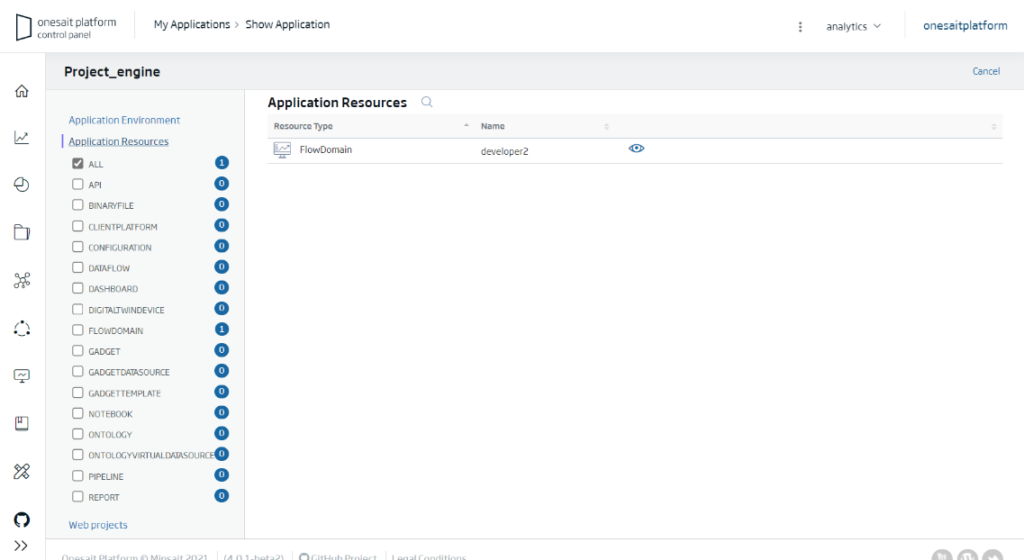
Architecture Reference Framework Publication
Last but not least, we have published the Backend Architecture Reference Framework.
Intelligence
We virtualize and simplify access to data between organizations, departments and systems, achieving a 360-degree view of business entities, and facilitating their exploitation, through real-time rules, execution of complex algorithms or traditional analysis:
- Unique multi-repository data model.
- Collaborative environment for Data Scientist.
- Access, management and consumption of APIs.
We have oriented the work of this quarter in the following functionalities:
AutoML Models from the Platform
With this functionality, we will be able to select the attributes of an Entity (or make an SQL query on one or more Entities) and a learning model will be automatically created and trained, allowing us to predict the value of another attribute.
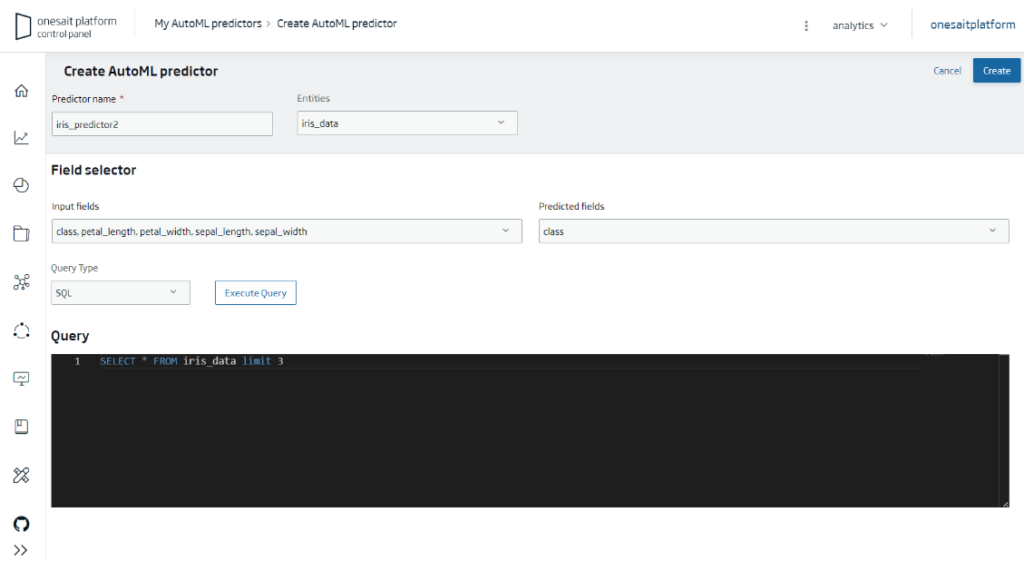
Once the model has been trained, we can query it like any other Entity:
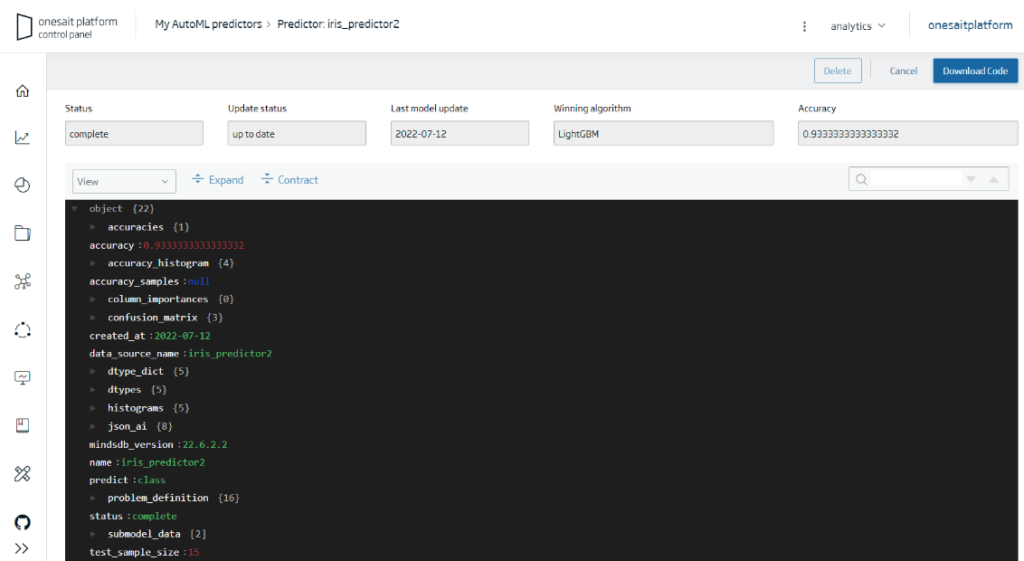
Besides, these models can be APIfied through the API Manager to perform queries, with all the potential that this entails.
If you are interested in knowing more about this, be sure to read this article on AutoML in the Development Portal.
Within this section, you can find more documentation about the component:
Spark Cluster Management Support
In this quarter, we have started with this new functionality that we will continue during Q3. We have focused on the embedded deployment of a Spark cluster along with the Platform and its job viewing tools, as well as being able to submit Spark jobs through the Platform tools.

In this article of the Development Portal, the integration and future extensions are analyzed in detail.
New Onesait Platform DataFlow
Until this version, the Onesait Platform has used Streamsets Data Collector (SDC) as the engine of the Onesait Platform Dataflow module. SDC was an Open Source software that, during this time, we have successfully used this technology in many Projects and Products.
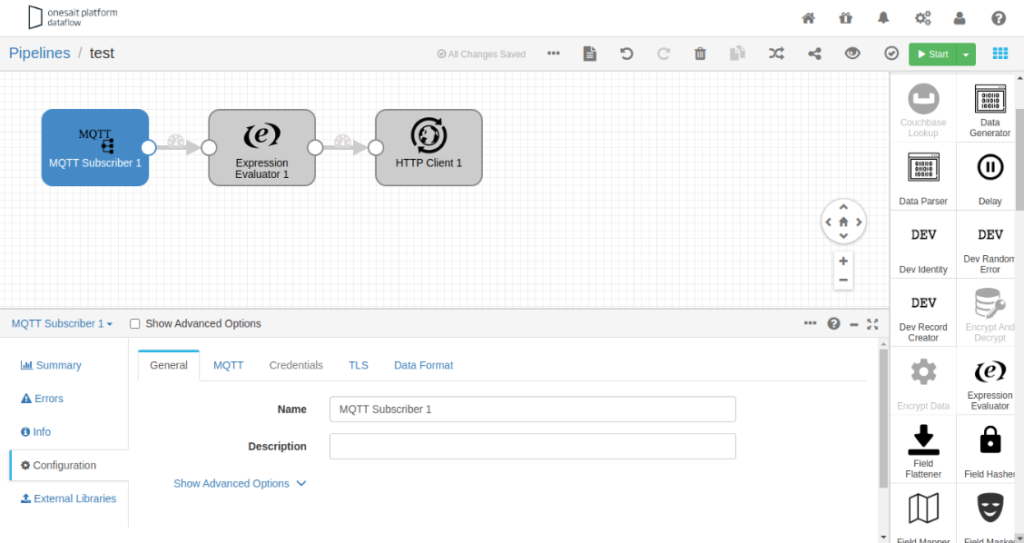
Streamsets, the company behind the SDC, has changed its license policy and, as of version 4.0, SDC is no longer Open Source. Due to this change in the license, we have made a fork on the SDC Open Source repository, which starts from version 3.23.0, and from this release, the Onesait Platform team will carry out both corrections and new functionalities. This new product, derived from SDC, has the name of Onesait Platform Dataflow and will continue to maintain the Apache License 2 license.
In any case, the Onesait Platform will continue to support Streamsets Data Collector for all those Projects that prefer to acquire the Streamsets license. We explainit all in a greater detail in this article on the Dev Portal.
Other improvements
In this distribution, we have also taken care of details and improved features, such as:
Access to private VPNs from DataFlow
The ability to connect to an OpenVPN-type VPN from within a pipeline has been encapsulated in DataFlow, so that access to this VPN is started at the start of the flow and disconnected autonomously when it ends.
This will allow us to ingest very easily against repositories to which there is only access from a VPN.
Esto nos permitirá hacer ingestas de forma muy sencilla contra repositorios a los que sólo hay acceso desde un VPN.
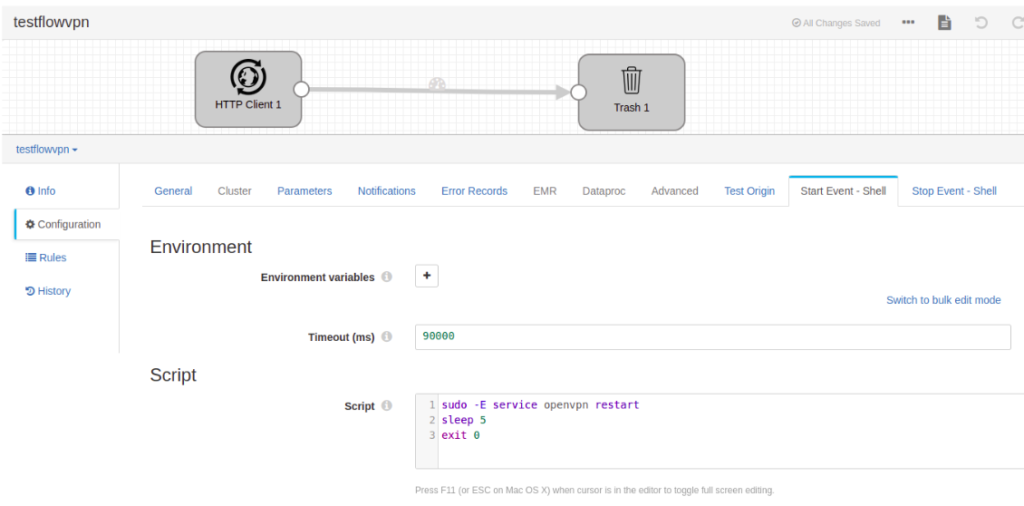
If you are interested, you can find more information about it in this article on it, in the Development Portal.
Experience
We connect user-centered research and design, with the construction and development of interfaces using the latest technologies:
- +70 reusable components.
- 35% time savings in conceptualization and design.
- 25% savings in Front development time.
After the integration of the Onesait Design asset as Onesait Platform Experience (more information in the Experience Guides), in this quarter we have made progress in two very important lines:
Visual development of user interfaces from FIGMA design
Aiming to offer its own solution for the development of user interfaces with a Low Code approach, we have developed a user and role management archetype connected to the Onesait Platform APIs.
This tool fits into the rapid prototyping of Onesait products, and speeds up the process of building a solution with these characteristics.

We explain it in detail in this article of the Development Portal.
Development with microfrontends
With microfrontends, we can integrate different modules in a short time. This way, the main application will be the container that will install the components as libraries.
These microfrontends or distributed modules are built with Vue.js and follow the structure of a project under this development framework.
If you are interested in this aspect, do not stop reading this guide that we have created about it.
Center
With Center, we can manage the deployment and operation of our Solutions in our preferred cloud, and we have tools available to facilitate the migration to the Cloud of our Legacies:
- Simplifies migrations to the Cloud.
- Centralizes the DevSecOps ecosystem.
- Manages the deployment of reusable functional accelerators.
After the initial version of the Control Center, this quarter we have focused on these lines of work:
Support to the Process of Modernization of Legacy Applications
As a project accelerator tool, the Center includes a methodological approach and tools to migrate existing applications to Cloud environments using the Kubernetes standard.
In this first version, we have focused on solving the scenario with legacy-type applications, in which what we are going to do is move the components of the current solution to a solution based on containers and deployed on the Cloud.
If you are interested in seeing this functionality in operation, do not hesitate to contact us through the Platform’s channels.
This process includes the Assessment of the current application:
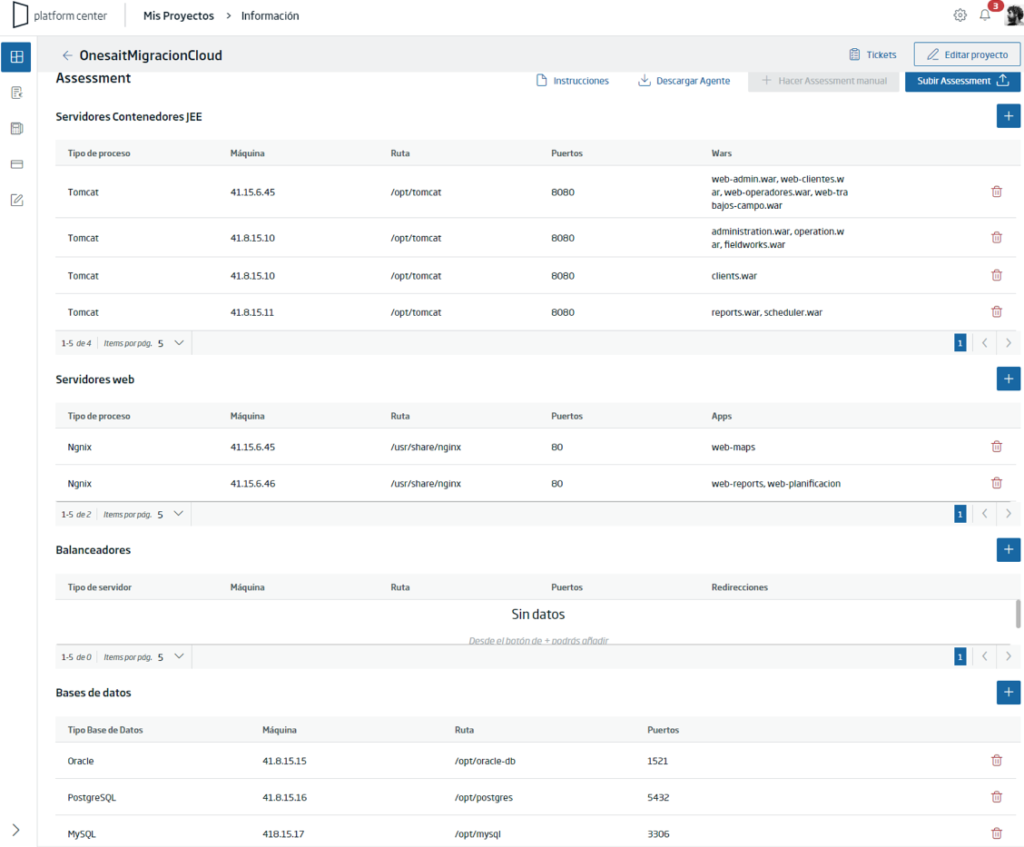
It can be displayed like this:
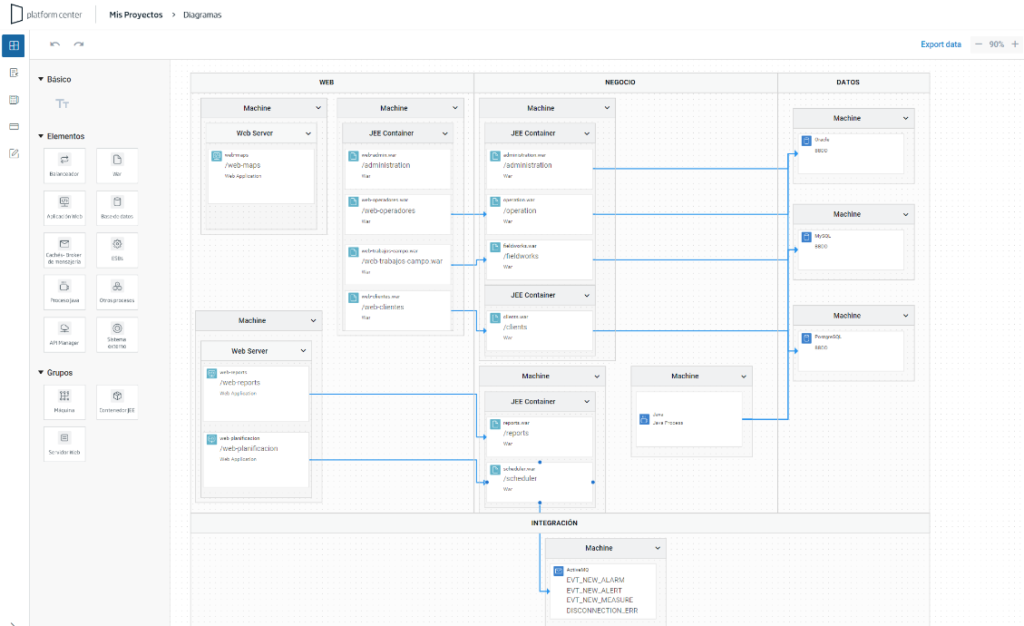
Containerization of the current software would look like this:
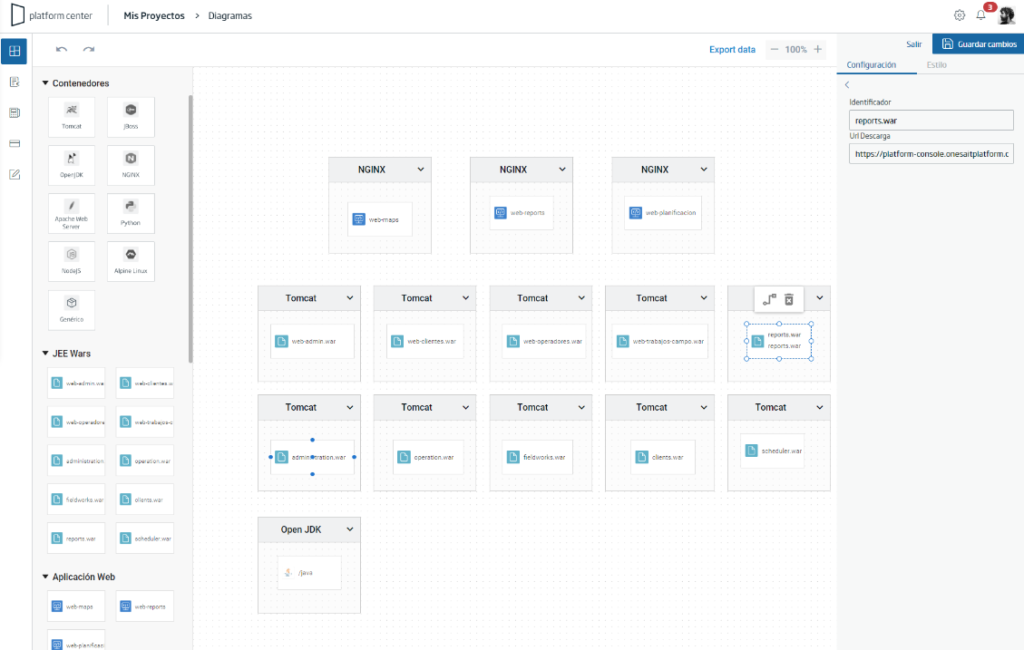
The preparation for deployment in Kubernetes through the Chart Helm:

The deployment of the same application in different Cloud environments with minimal configuration changes:
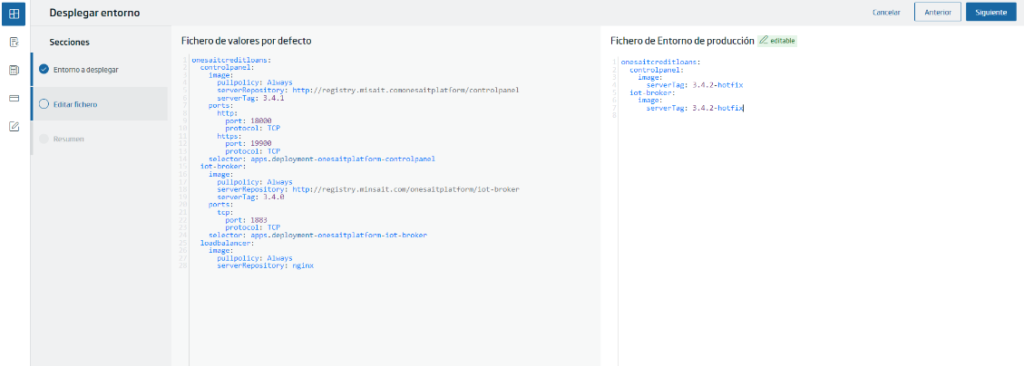
If you want to know the whole process, be sure to visit this guide that we have available in the Development Portal.
Other improvements
We have specifically worked on improving:
Project Cost Calculator
With feedback from the Business Development team, we have made minor improvements to the Platform Center Cost Calculator – among these, Integration with Google Compute Engine prices and Control in the approval flow for the user with the Business Developer role.
Develops & Support
Our reference framework defines the incorporation of the most recent and proven practices to ensure the quality and agility of the development process of our products, highlighting the following aspects of the strategy.
This quarter we have worked on:
Backups of the Platform on Velero
We have integrated Velero as a tool to make backups of the Kubernetes namespaces of the Platform, thus guaranteeing that, in the event of a problem, the service can be restored as soon as possible.
Backups can be stored in Buckets, such as those from Google, and it is also possible to use the MinIO service integrated in the Platform as a backup storage:
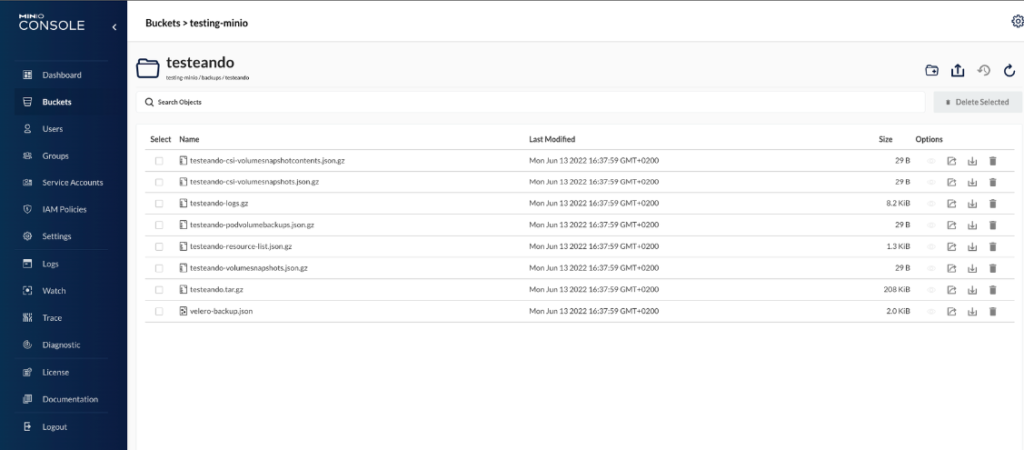
You can find more information about it in this article of the Development Portal.
Community
We bet on Open Source technologies to create community and ensure independence. Throughout this second quarter of 2022, we have worked on the following:
A new Community Newsletter
We are generating new content non-stop, so to reach everyone we have decided to create an internal Newsletter on a monthly basis with the most relevant content of the month, such as:
- Those blog posts that are
breaking the Internethaving the most success. - The aspects we are working on.
- Relevant news about our Product or technology in general.
- Upcoming events of the Platform team.
- More sections to come out into the open in due time.

New content on the Blog
As you know, last quarter we remodeled the blog, not only to give it a more modern look, but also to adapt it to how we wanted to organize the information.
This was due to the fact that, as you probably already know, there has been an internal restructuring in Minsait, so that new teams and units are collaborating with us, which is why they have their own place of honor in our Community.
This quarter you have surely noticed how we have increased the pace of publishing articles on different topics, with new content and tutorials on Architecture and Back, as well as Geospatial and GIS.
Remember that you can access the themed content from the «Technologies» menu:

Restructuring of the Developer Portal
We continue expanding the contents of the Developer Portal, this time including the documentation of the different practices that encompass the Onesait Platform.

Now, in addition to having the information on the Platform as such, the Accelerators and other practices, we have the different Reference Frameworks that we use, which allows us to know what technologies we work with, why and the best practices:

Community Versions
- Publication of release 3.0.0-ce on Github: Version 3.0.0-Community Edition of the Platform is now available on GitHub.
- Updated CloudLab instance with version 3.3-Moonwalker
As with each release, the news we are bringing are many and different, and this version 4.1.0 is no exception. We hope you liked it and that you can take advantage of them in your Products and Projects.
Remember that, if you have any questions or queries, you can leave us a comment or contact us through the usual channels.

